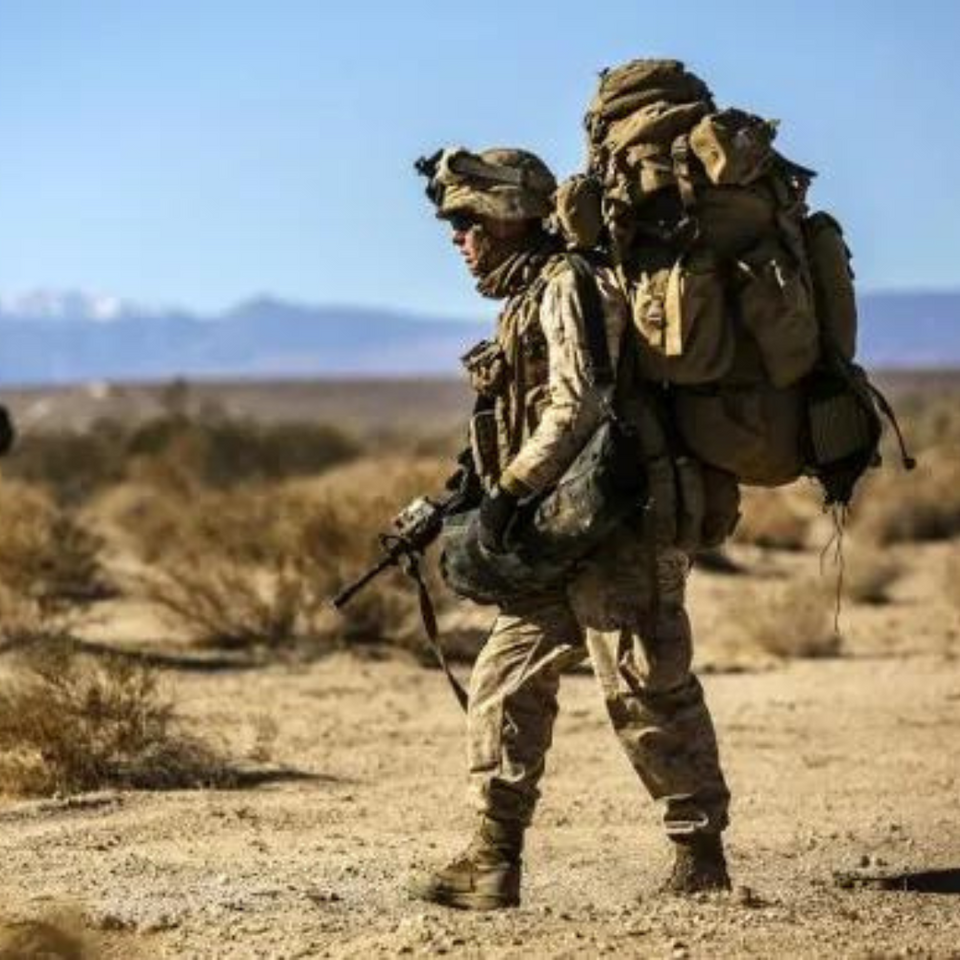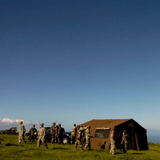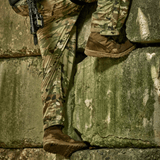How To Create the Right Medical Pack
You should always be prepared for the worst so you’re never left scrambling during an unexpected emergency. There is a real difference between a good medical pack and one you simply buy off this shelf in a general store. Contrary to popular belief, the number of items in a kit is meaningless if they are all band-aids and household items. You want to focus on quality over quantity when selecting your medical kit. A good medical pack can help you treat and stabilize a real injury in the moment before medical attention arrives. Think of a first aid medical pack as not just for you, but to help others in your vicinity when an accident strikes.
Let’s walk through how you should choose a medical first aid kit.
- Asses your actual needs
- Know your skill set and medical training
- Understand your options and differences
- Choose a kit that best fits
There are two major divisions of medical kits. The IFAK ( Individual First Aid Kits) is a small, portable form factor kit that can hold life-saving medical supplies in a pinch.The other variety consists of larger kits for emergency disaster response or home or work injuries. Both options can treat a variety of wounds and injuries in the moment if you’re unable to reach a hospital.
Medical Kits are not just for military operations. They are a must-have for hiking, camping, hunting, soccer clubs, or any instance where you could find yourself in a medical emergency that needs immediate attention. Each kit is built differently for different needs or set of potential injuries such as:
- Natural Disasters
- Law Enforcement
- Day to overnight hiking
- Home and Office First aid kits
- Sports
- Heavy machine or Construction Work kits
- Hunting or shooting sports
- ATV / Snowmobiling etc
Not all medical packs in the same category are equal, either. A great example are the military grade tactical first aid kits which need to differ based on the person’s training. Another example would be a law enforcement officer who most likely is not trained in using a nasal airway or decompression needle even though they need to carry a gunshot bleed stop kit; however, a combat soldier would. Each medical kit comes in a number of shapes and sizes and with a variety of different supplies. So, how do you set up the right medical pack? Let’s dive in.
Different Activities
The first and most important step to picking your med kit is understanding why you need it in the first place. The medical pack you bring when hunting or shooting may include supplies to treat gunshot wounds whereas an every day medical pack will have a variety of basic, first aid supplies. You may even prefer a sports medical pack would include items to soothe strained, bumps or eye injuries.
Your lifestyle or activities may call for different medical pack need. It’s recommended to have different packs for different activities that you can grab and go. This stage of planning what you need should take more time than you think. For example, you may not need a chest seal if you're not in shooting sports but snowmobilers can have more serious injuries from impaled branches.
Understand Your Personal Needs and Training
Before you put together or purchase a med pack, it’s important to know your own needs and training. We all have personal items you use often or supplies for an underlying condition like an inhaler or ibuprofen for chronic back pain. Some individuals may have a hard time getting small cuts to clot and require you to have a small quikclot. Your needs may be drastically different from someone else. Having gear and not being trained in what you have is not productive unless your task calls for it. It’s good practice to generally only keep items you're comfortable using, or can be used by someone else.
Personal Use First Aid Kits
Personal medical kits or individual first aid kits are meant to be used on yourself when you go hiking, hunting, etc. That way, you can patch yourself up in case of a real emergency. Some of the items you might need in a personal medical pack may include:
- Rolls of bandages and gauze
- Compression wrap and or Tourniquets
- Epipens if needed
- Medical or Duck tape
- Burn Pad
Your personal medical pack or IFAK is likely to be a lighter, more compact kit but enough to cover most feasible scenarios possible with the activity you're doing. It should also include any specific items or medication you may personally need.
Individual first aid kits need to be capable of stopping bleeding, wrap a sprain or break and cover real injuries that need attention. It’s normal to leave out minor injury items but you may also opt to include ibuprofen and antibacterial cream. These kits are meant to get you home or to a safe place and worry about the small stuff later. If you are planning on a very tight personal first aid kit, then be sure everyone in your group also has one for themselves.
Groups or Teams
Unlike a personal kit, if you’re carrying a medical pack for a group, or family, it will need to be more thoroughly stocked.
Group medical packs are often used when planning a family trip, a hunting party, a group event and more. These should be designated to the person with the most medical experience and knows how to use the supplies therein. Group kits contain at least a few of each supply, and you may need a more variety of gear such as splints, ice packs, and potentially more serious gear for the trained member. If you have a small group, you can curate your medical pack based on their needs while still keeping the activity you need it for in mind. For example, a hunting kit and a soccer team kit would look much different. The larger the group, the more dramatic and varied the injuries can also be. It is common in larger groups for each person to also have their own personal kit and a group leader to have a large one. This way, you do not deplete group supplies and can cover a wider variety of injuries with each person carrying any specific gear they need.
Must-Have Medical Pack Supplies
Regardless of your individual needs, there are certain standards that medical packs should always have. These basic first aid supplies will make sure that you’re prepared for most situations. From there, you can customize your pack based on your needs.
According to the CDC, here are some must-haves for first aid kits/medical packs:
- Absorbent compress dressings, gauze bandages, and gauze pads. Compress dressings help to stop bleeding and stabilize a wound. Bandages should be highly absorbent and sterile. Vacuum packing allows them to take up less space in your medical pack. If you get gauze compress dressings, make sure it’s pre-washed and fluff dried. Another option that adds pressure to the wound and helps to quicken clotting is QuikClot® Bleeding Control Dressing, made with OTC hemostatic dressing. You can also find rolled up gauze bandages for wrapping wounds once compressed.
- Adhesive bandages, roller bandages, and cloth tape. Adhesive bandages are good for wrapping wounds in the long term and holding down compress dressings. You want something that will adhere to itself when you wrap it, rather than sticking to the skin. For this, we suggest something like elastic self-adhesive bandaging. Latex free medical tape can also help to bind dressings to your wound.
- Antibiotic ointment packets and antiseptic wipe packets. Cleaning wounds is always important in order to ensure that they don’t become infected. Hydrocortisone ointment packs are Many premade medical kits that we sell include ointment packets and antiseptic wipes to help you clean wounds and keep them clean in the midst of your emergency.
- Aspirin. Aspirin can help with anything from a headache to relieving pain in the midst of an emergency so you can move and think more freely. A small bottle of ibuprofen or acetaminophen can be found at almost any drug store, grocery store, and even gas station.
- Emergency blanket. Emergency blankets are metalized plastic sheet blankets that serve a number of purposes. They can treat or even prevent hypothermia, serve as a windbreaker or waterproof wrap in emergency outdoor situations, and are reflective enough to serve as an emergency signaling device. A strong emergency blanket reflects up to 90% of body heat, so it’s a good way to keep warm when needed.
- Breathing barrier (with a one-way valve). A breathing barrier with a one way valve is used in CPR. It allows the person administering CPR to do so without actual mouth-to-mouth contact, thus preventing further contamination.
- Cold compress. Cold compress is another way to relieve pain. Once the wound is wrapped, applying a cold compress can reduce inflammation and even slow bleeding.
- Nonlatex gloves. Gloves are necessary for sterile and safe administration of wound care. But because latex is such a common allergy, we recommend non-latex gloves. Vinyl or nitrile gloves are common alternatives to latex when it comes to medical gloves.
- Thermometer. A thermometer is a must-have to keep observation over a health emergency in group kits. A thermometer can help you to know if you’re feverish, and there are even hypothermia thermometers.
- Tweezers. Hardy metal tweezers are a must for any medical kit. You want something durable with a strong grip to cover most situations where tweezers might be needed.
- We also like a variety of universal gear such as:
- ABD Pads
- Combat Duck tape
- Surgical tape
- Self Adhesive Wrap
- EMT shears
- Burn pad or dressing
- Cravat or Triangle wrap
- Quickclot if the activity requires
- Chest seal for more serious activities.
It’s a good idea to have multiples of many of these supplies. In the case of bandages, it’s often recommended to have different types so that you’re prepared for a variety of different medical situations. Some gauze and tape also make a good smaller bleeding bandage at any time.
Getting the Right Bag
Once you know what kind of medical supplies you need in your medical pack, you have to choose the right bag. This will, again, depend on your needs.
A combat medical pack is designed to be fairly compact and easy to travel with. On the other hand, a backpack can offer more space, especially if you need a medical pack for a team or group. You can find a number of options in between or you might simply opt for a small medical pouch.
Whatever size you choose, your medical pack should be able to fit all of the supplies you need while also being manageable and portable. Your choice may also depend on the way that you carry the bag. A backpack allows you to keep your medical pack literally on your back and within easy access. A combat bag is more likely to be carried at your side, while a pouch could be attached to a larger bag or luggage.
The organization of your medical pack is pretty critical. Utilize inside pockets and outer portions. Make sure you have a specific place for everything in your medical pack so that you can sift through it quickly to get what you need. Urgent, trauma medical supplies should be the easiest to access, packaged near the front of the bag. Anything that might be breakable or more likely to leak can be packed on the inside of the bag. No bag will be 100% perfect, but with the large variety out there you can get really close.. As long as you pack it and know where things are, you're all set.
Need a Medical Pack or Medical Pack Supplies? Army Navy Outdoors Can Help
Whether you’re looking for the right medical pack or you need to restock your medical pack, Army Navy Outdoors has you covered. Check out our shop today to find the right medical supplies for your emergency preparedness needs.







